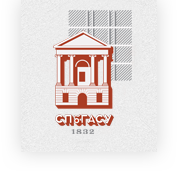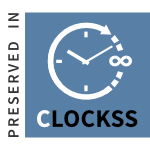Exploring Teachers’ Attitudes Towards Students’ Errors and Effective Corrective Feedback Strategies in EFL Teaching: A Case Study of a Vocational High School in China
DOI:
https://doi.org/10.63313/ESW.9040Keywords:
Error Correction, Vocational Education, Self-Correction, Peer Feedback, EFL Pedagogy, Affective FactorsAbstract
Mistakes are an inseparable element of the language acquisition journey, particularly within the English as a Foreign Language (EFL) setting, so this study explored teachers' stances regarding students' mistakes and put forward practicable corrective feedback approaches based on a case study carried out at a vocational high school in Nanchong, China, where students frequently demonstrated restricted English competence, and by combining theoretical models like the Interaction Hypothesis and Affective Filter Hypothesis with classroom observations, the research emphasized the significance of nurturing a positive outlook on mistakes, encouraging self-correction, and utilizing peer feedback, and the results indicated that indirect correction methods (for instance, recasts and prompts) and positive reinforcement lessened foreign language anxiety while fostering students' autonomy and self-assurance, and the findings underlined the effectiveness of indirect correction and positive reinforcement in promoting autonomy, providing practical suggestions to turn mistakes into learning chances for low-proficiency learners
References
[1] Ellis, R. (2009). Corrective feedback and teacher development. L2 Journal, 1(1), 3–18.
[2] Horwitz, E. K., Horwitz, M. B., & Cope, J. (1986). Foreign language classroom anxiety. The Modern Language Journal, 70(2), 125–132.
[3] Krashen, S. D. (1982). Principles and practice in second language acquisition. Pergamon Press.
[4] Liu, M. (2006). Anxiety in Chinese EFL students at different proficiency levels. System, 34(3), 301–316.
[5] Long, M. H. (1996). The role of the linguistic environment in second language acquisition. In W. C. Ritchie & T. K. Bhatia (Eds.), Handbook of second language acquisition (pp. 413–468). Academic Press.
[6] Lyster, R., & Ranta, L. (1997). Corrective feedback and learner uptake: Negotiation of form in communicative classrooms. Studies in Second Language Acquisition, 19(1), 37–66.
[7] MacIntyre, P. D., & Gardner, R. C. (1991). Language anxiety: Its relationship to other anxie-ties and to processing in native and second languages. Language Learning, 41(4), 513–534.
[8] Young, D. J. (1991). Creating a low-anxiety classroom environment: What does language anxiety research suggest? The Modern Language Journal, 75(4), 426–439.
[9] Li, S. F. (2023). A study on Chinese students’ preferences for corrective feedback in EFL writing. Journal of Language Teaching and Research, 14(2), 289–296.
[10] Ma, Y. L. (2023). The effects of direct vs. indirect written corrective feedback on senior high school students’ writing self-efficacy. Master’s thesis, Yili Normal University.
[11] Zhang, H. (2023). The impact of peer feedback training on learner engagement in EFL writing peer correction. Master’s thesis, Fuyang Normal University.
[12] Chen, L. (2023). Corrective feedback practices in Chinese vocational EFL classrooms. Journal of Asia TEFL, 20(1), 45–62.
[13] Li, J., & Zhang, Y. (2023). Reducing anxiety through gamified learning: A vocational school intervention. ELT Journal, 77(2), 189–201.
[14] Zhou, M. (2020). Face-saving and error correction in Confucian heritage cultures. TESOL Quarterly, 54(3), 701–725.
Downloads
Published
Issue
Section
License
Copyright (c) 2025 by author(s) and Erytis Publishing Limited.

This work is licensed under a Creative Commons Attribution-ShareAlike 4.0 International License.















